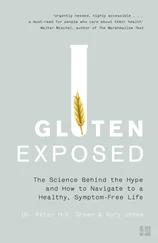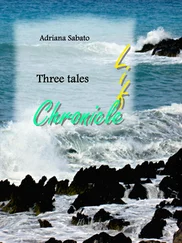In spite of the country’s publicized efforts to improve safety standards in the Zone, a director of the Shelter complex told me in an interview, “there are no norms of radiation safety here.” The country’s Ministry of Health sets annual allowable norms of dose exposures, but, according to the director, these norms are not strictly adhered to. That is because in Ukraine’s current period of sharp economic decline, employment in the Zone is considered premium. Referring to the plant workers, he told me, “Taking this risk is their individual problem. No one else is responsible for it.” When I asked him to compare his country’s enforcement of worker safety norms with those of Western Europe, he told me quite somberly, “No one has ever defined the price of a dose exposure here. No one has ever defined the value of a person here.” [8] Such values are calculated on the basis of “rem-expenditures” workers accrue; their amounts are limited by international standards. Despite the existence of such standards, norms of worker exposures are being decided locally and within the constraints of local economies that “undervalue” workers’ lives by exposing them to more risk for less pay.
In a situation where economic forces drive people to become preoccupied with physical survival, the effects of leaving the value of a person undefined are far-reaching. In such a world, physical risks, abuses, and uncertainties escalate. The labor of the bio-robot appears ever more acceptable, desirable, and even normal.
• • •
In an effort to map environmental contamination, to measure individual and populationwide exposures, and to arbitrate claims of illness, government and scientific interventions have recast the Chernobyl aftermath as a complex political and health experience with its own bureaucratic and legal contours. The initial—contested—scientific and medical assessments of the disaster’s extent and biological impact, the choice to delay public announcement, and the economic incentives to work in the Zone have uniquely shaped Chernobyl as a tekhnohenna katastrofa (a technogenic catastrophe), in the words of many of my informants, including people fighting for disability status, local physicians, and scientists. This term suggests that not only excessive exposures to radiation but policy interventions themselves have caused new biological uncertainties. Rational-technical responses have exacerbated the biological and social problems they tried to resolve, even generated new ones. This process, in turn, contributes to further uncertainty concerning a resolution to the crisis, an increase in illness claims, and social suffering among affected individuals and groups. [9] Social suffering “results from what political, economic, and institutional power does to people, and, reciprocally, from how these forms of power themselves influence responses to social problems” (Kleinman, Das, and Lock 1996:i).
Chernobyl was an “anthropological shock” for Western Europe, bringing the efficacy of everyday knowledge to a state of collapse and underscoring how much the conditions for secure living in what have been termed risk societies lie in the hands of experts of all kinds (Beck 1987). This collapse also took place, but in a different form, in the other Europe. Chernobyl was closely associated with the collapse of the Soviet system as a whole. In this process Chernobyl, or risk itself, became an important resource to be tinkered with. Though this technological disaster has generated a strange world, difficult to comprehend, in its aftermath a postsocialist state, social mobilization, and local knowledge and experiences of health have been constituted anew. This book explores the ways people have learned to engage with Chernobyl-related bureaucracies and medical and scientific procedures as a matter of everyday survival—and, particularly, with how biology, scientific knowledge, and suffering have become cultural resources through which citizens stake their claims for social equity in a harsh market transition. Access to such resources is refracted through the fault lines of gender, class, and social status, to be sure. More broadly, these interactions illustrate how in the modern state, spheres of scientific production and politics are engaged in a constant process of exchange and mutual stabilization.
This book is based on eighteen months of field research in Ukraine, Russia, and in the United States between 1992 and 1997, with an additional one-month follow-up visit to Ukraine in 2000. It is a historical and ethnographic account of the rational-technical administrations of the Chernobyl aftermath (both in the Soviet and post-Soviet periods) and of these administrations’ economic, social, and biological impact on the populations affected, displaced, or sickened by the disaster. [10] The Soviet period refers to the years 1986-1991. The post-Soviet period refers to 1991 and beyond.
My particular focus is on Ukraine, a country that inherited the nuclear power plant—along with a politically and scientifically unresolved Chernobyl crisis—when it declared independence from the Soviet Union. Approximately 8.9 percent of Ukraine’s territory is considered contaminated. Most of the Exclusion Zone is located in Ukraine (see figure 3). During the period of my field research, the country witnessed the rapid growth of a population claiming radiation exposure that made them eligible for some form of social protection. Social protections include cash subsidies, family allowances, free medical care and education, and pension benefits for sufferers and the disabled. This new population, legally designated as poterpili (sufferers) number 3.5 million and constitutes a full 5 percent of the Ukrainian population. [11] Differences between sufferers and the disabled will be addressed in chapter 4.
On average, Ukraine expends about 5 percent of its budget on costs related to the Chernobyl aftermath, including the cleanup and technical maintenance of the ruined reactor. In 1995, over 65 percent of that outlay was spent on social compensations for sufferers and on maintaining a massive legal-medical, scientific, and welfare apparatus. Neighboring Belarus, by contrast, spends considerably less than Ukraine does on the social welfare of its sufferers and has limited the number of Chernobyl claimants. [12] Personal communication, Ministry of Emergencies (Chernobyl Section, Division of International Relations). In Russia, the number of people considered affected and compensatable has been kept to a minimum and remains fairly stable (about 350,000, including 300,000 Zone laborers and 50,000 persons now resettled in noncontaminated areas).
Twenty-three percent of this country’s territory is considered contaminated, almost three times the percentage of contaminated Ukrainian land. The Belarussian government has tended to suppress or ignore scientific research; it downplays the extent of the disaster and fails to provide enough funds for the medical surveillance of nearly two million people who live in contaminated areas. [13] In fact, the Belarussian government has encouraged its own people, as well as Russians living outside the new borders of Russia (mainly in Central Asia and the Caucasus, where war is ongoing), to take up residence in contaminated areas, offering them housing, jobs, and resident status. See Ackerman 2000.
Unlike Belarus, Ukraine has used the legacy of Chernobyl as a means of signaling its domestic and international legitimacy and staking territorial claims. It developed a politics of national autonomy through the Chernobyl crisis, devaluing Soviet responses to the disaster as irresponsible. The state established new social welfare and scientific institutions dedicated to a Chernobyl population and began to provide sufferers and the disabled relatively generous cash entitlements drawn from a statewide Chernobyl tax. Moreover, the new government defined new and ambitious safety measures for Zone workers. This meant stabilizing the deteriorating Shelter, following norms of workers’ safety, mitigating future contamination, and closing the last remaining working units of the Chernobyl plant. The implementation of this new program had also become a key asset in Ukraine’s foreign policy. In response to these efforts, Western European countries and the United States continue to promise Ukraine further technical assistance, loans, and potential trading partnerships. Such exchanges have legitimated a new political-economic arena in which profit, political influence, and corruption loom in the already powerful and tax-evading energy sector.
Читать дальше












